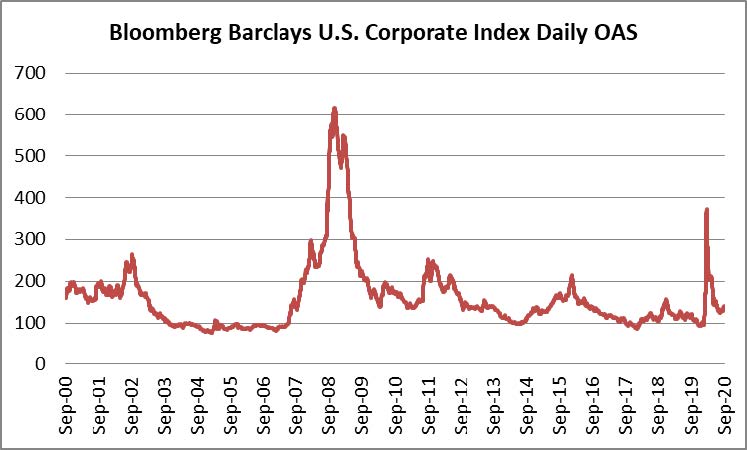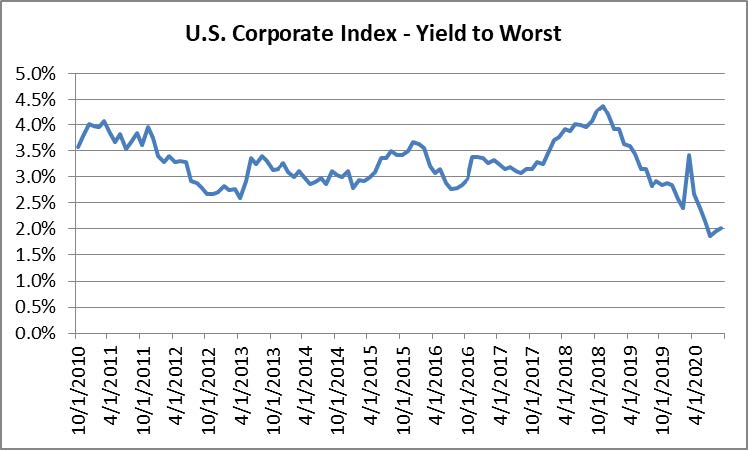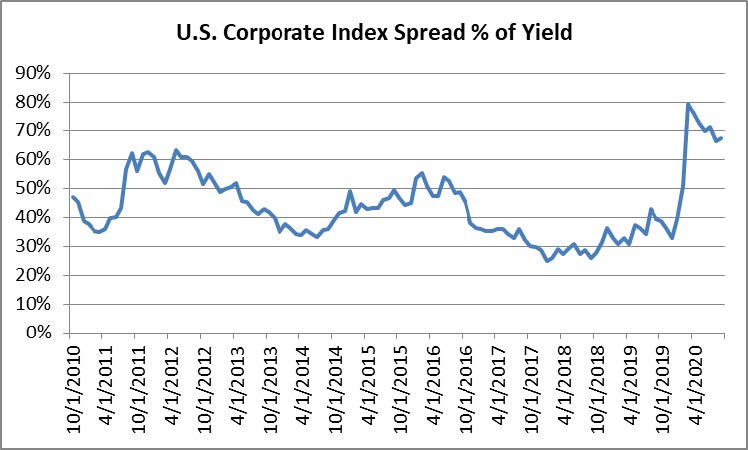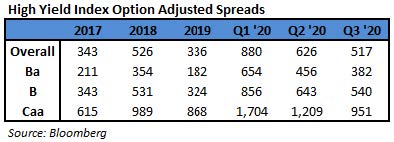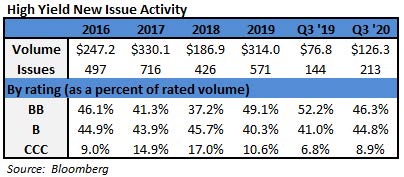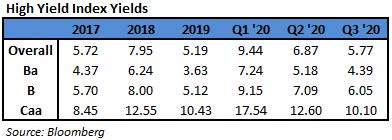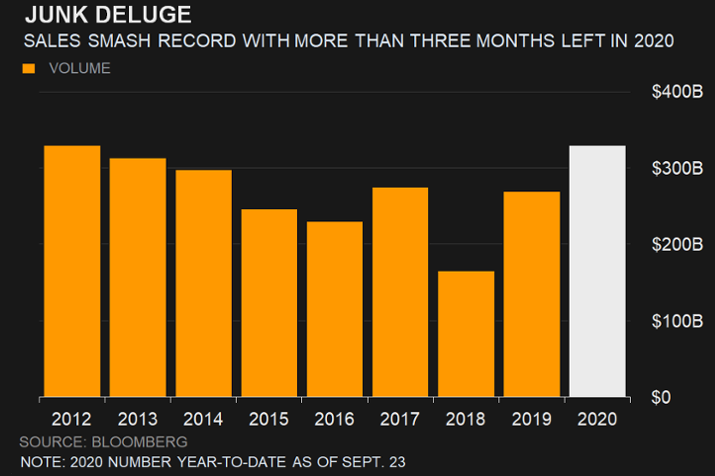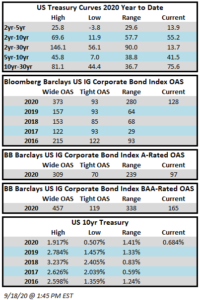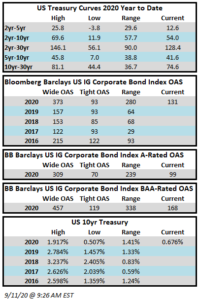Fund Flows & Issuance: According to a Wells Fargo report, flows week to date were $4.9 billion and year to date flows stand at $46.4 billion. New issuance for the week was $6.6 billion and year to date issuance is at $340.6 billion.
(Bloomberg) High Yield Market Highlights
- U.S. junk bonds are headed for the biggest weekly gains in more than two months with yields just 53bps off June 2014’s record low of 4.83% as CCCs and even lower rated pay-in-kind bonds find eager buyers.
- The rally may extend as global equities, also on track to post their best weekly gains since July, and U.S. stock futures climb on renewed hopes of fresh stimulus
- Investors returned to the asset class with gusto, pouring cash into retail funds after recent exits amid market volatility. U.S. high yield funds reported an inflow of $4.01b for the week ended Oct. 7, the 11th biggest on record, after pulling cash the previous two weeks
- Issuance continued unabated this week with almost $7 billion in debt pricing
- In keeping with the recent trend and an overall risk-on tone, demand for new issues was at least about 3x offering sizes, and even CCCs saw robust demand
- The high-yield index posted gains of 0.2% on Thursday and is on track to see the biggest weekly gains since July. The index has seen gains for four straight sessions
- Yields closed at 5.36%, a five-week low, and is just 53bps off the record low of 4.83%
- Spreads closed at +474, down 5bps and also a five-week low
(CNBC) Trump reverses course on coronavirus relief talks
- President Donald Trump reversed course Tuesday night and urged Congress to approve a series of coronavirus relief measures that he would sign, including a new round of $1,200 stimulus checks for Americans.
- Earlier in the day, he had halted talks between top Democrats and Republicans until after the election, which appeared to have killed the chances of a new package.
- “If I am sent a Stand Alone Bill for Stimulus Checks ($1,200), they will go out to our great people IMMEDIATELY. I am ready to sign right now. Are you listening Nancy?” Trump tweeted Tuesday night.
- He said in another tweet that he would approve funding for specific struggling industries, such as airlines and small businesses, which is short of what House Democrats proposed.
- “The House & Senate should IMMEDIATELY Approve 25 Billion Dollars for Airline Payroll Support, & 135 Billion Dollars for Paycheck Protection Program for Small Business. Both of these will be fully paid for with unused funds from the Cares Act. Have this money. I will sign now!” Trump said.
- A senior administration official familiar with the president’s thinking said Tuesday that a “large-scale stimulus package is on the sidelines,” as Trump made clear earlier, saying the president felt it best not to string people along. But the White House appears to be planning to push a series of smaller, individual packages on mutually agreed-upon items.
- Initial coronavirus aid expired at the end of July. Current negotiations had centered on a package that would have provided another round of direct payments to Americans, enhanced unemployment benefits and money for schools, testing, small businesses and the airline industry, which has begun substantial layoffs.
- Trump had slammed the door on a pre-election deal hours after Federal Reserve Chairman Jerome Powell said more stimulus to the economy is necessary, saying the recovery has “a long way to go.”
- Pointing to promising recent economic developments, Powell said easing up on added relief could “lead to a weak recovery, creating unnecessary hardship for households and businesses.”
- “By contrast, the risks of overdoing it seem, for now, to be smaller,” Powell told the National Association for Business Economics. “Even if policy actions ultimately prove to be greater than needed, they will not go to waste. The recovery will be stronger and move faster if monetary policy and fiscal policy continue to work side by side to provide support to the economy until it is clearly out of the woods.”
- Congressional negotiators have been deadlocked for months over a new stimulus package after having passed initial relief earlier in the year. Pelosi and Treasury Secretary Steven Mnuchin had recently resumed talks, but progress had been stalled.
